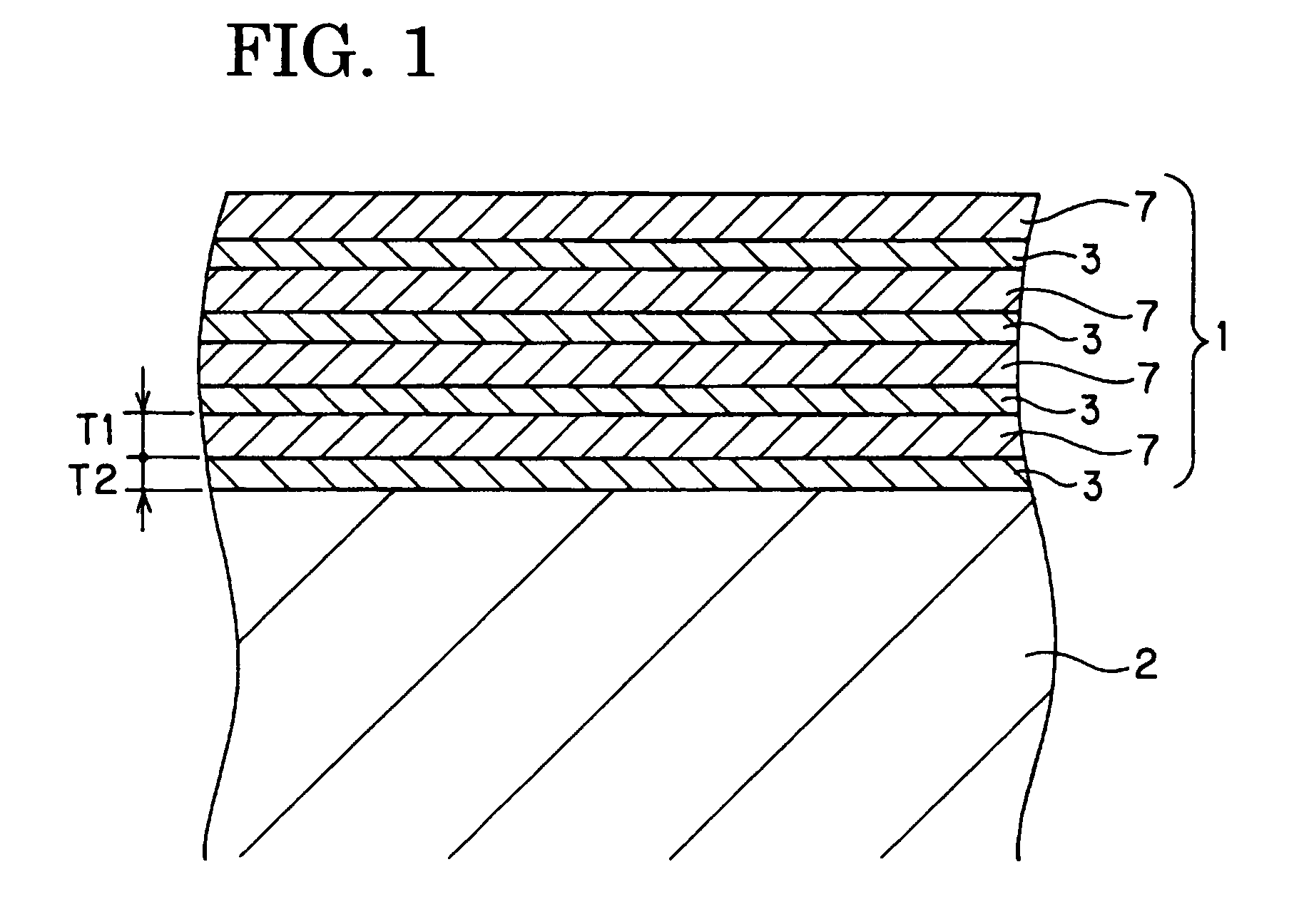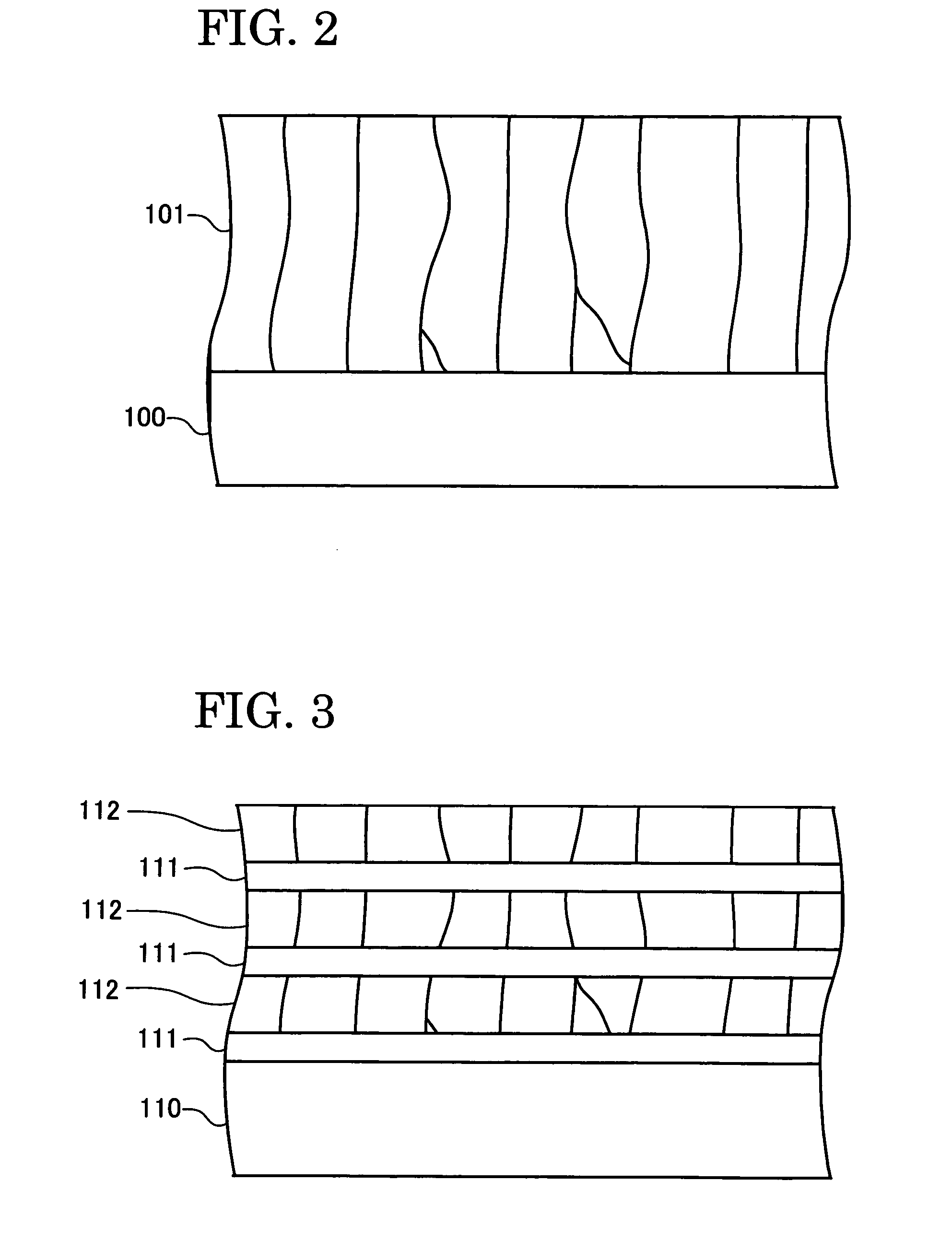High-frequency magnetic thin film, composite magnetic thin film, and magnetic device using same
a technology of composite magnetic and thin film, which is applied in the direction of magnetic bodies, inductances, and substrates/intermediate layers, can solve the problems of lowering reducing the manufacturing cost of mmic, and consuming a large amount of expensive semiconductor substrates. , to achieve the effect of preventing the growth of fe—c grains, excellent soft magnetic properties, and suppressing the degradation of soft magnetic properties
- Summary
- Abstract
- Description
- Claims
- Application Information
AI Technical Summary
Benefits of technology
Problems solved by technology
Method used
Image
Examples
example 1
[0096]According to the following deposition technique, a high frequency magnetic thin film of the present invention was prepared.
[0097]An Si wafer on which a 100 nm thick SiO2 was deposited was used as the substrate.
[0098]The high frequency magnetic thin film was deposited on the substrate by use of a faced-targets sputtering apparatus and according to the following techniques. Preliminary evacuation of the interior of the faced-targets sputtering apparatus was carried out to 8×10−5 Pa, thereafter Ar gas was introduced into the apparatus until the pressure reached 10 Pa, and then the substrate surface was subjected to sputter etching at an RF power of 100 W for 10 minutes.
[0099]Subsequently, the Ar gas flow rate was adjusted so as for the pressure to be 0.4 Pa, at a power of 300 W, a Co87Zr5Nb8 target and a composite target composed of an Fe target and C (carbon) pellets arranged thereon were alternately and repeatedly subjected to sputtering, and thus a composite magnetic thin film...
example 2
[0105]On the basis of the above described deposition technique of Example 1, a 20 nm thick CoZrNb layer and a 20 nm Fe—C layer (carbon concentration: 5 at %) were alternately laminated each in 13 layers in a successive manner, and thus a composite magnetic thin film (Example 2) of the present invention having a total film thickness of 520 nm (26 layers in total) was formed.
[0106]Examination of the structure of the composite magnetic thin film confirmed that the Fe—C layers were mainly constituted with columnar grains and the aspect ratio of the columnar structure portion was 1.4 or less. Additionally, the CoZrNb layers were confirmed to be amorphous.
[0107]FIG. 13 shows the magnetization curve measured after deposition. As is clear from the magnetization curve shown in FIG. 13, the in-plane uniaxial magnetic anisotropy was observed in the laminated film, and a value of 16.3 kG (1.63 T) was obtained for the saturation magnetization, a value of 44 Oe (3501.41 A / m) was obtained for the ...
example 3
[0109]On the basis of the above described deposition technique of Example 1, a 20 nm thick CoZrNb layer and a 50 nm Fe—C layer (carbon concentration: 5 at %) were alternately laminated each in 7 layers in a successive manner, and thus a composite magnetic thin film (Example 3) of the present invention having a total film thickness of 490 nm (14 layers in total) was formed.
[0110]Examination of the structure of the composite magnetic thin film confirmed that the Fe—C layers were mainly constituted with columnar grains and the aspect ratio of the columnar structure portion was 1.4 or less. Additionally, the CoZrNb layers were confirmed to be amorphous.
[0111]FIG. 15 shows the magnetization curve measured after deposition. As is clear from the magnetization curve shown in FIG. 15, the in-plane uniaxial magnetic anisotropy was observed in the laminated film, and a value of 16.7 kG (1.67 T) was obtained for the saturation magnetization, a value of 48 Oe (3819.72 A / m) was obtained for the a...
PUM
| Property | Measurement | Unit |
|---|---|---|
| thickness | aaaaa | aaaaa |
| thickness | aaaaa | aaaaa |
| resistivity | aaaaa | aaaaa |
Abstract
Description
Claims
Application Information
 Login to View More
Login to View More - R&D
- Intellectual Property
- Life Sciences
- Materials
- Tech Scout
- Unparalleled Data Quality
- Higher Quality Content
- 60% Fewer Hallucinations
Browse by: Latest US Patents, China's latest patents, Technical Efficacy Thesaurus, Application Domain, Technology Topic, Popular Technical Reports.
© 2025 PatSnap. All rights reserved.Legal|Privacy policy|Modern Slavery Act Transparency Statement|Sitemap|About US| Contact US: help@patsnap.com



